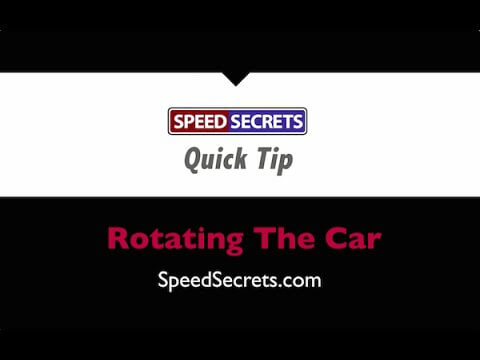Q: “Big fan of your material and how you communicate these challenging topics. Have been experimenting with different trail braking techniques and their effects on rotation. How does one determine the amount of rotation that should occur in a corner? Given that there are appropriate turns and areas to invoke different amounts of rotation during cornering, how does one determine how much is the right amount? What are the signs that you are under, over or have accomplished the desired rotation? Also please differentiate between rotation, drift, slide and oversteer. Thanks for all your help.”
A: First, I’ve dealt with a related question in this Ask Ross column in “When should I trail brake & when shouldn’t I?“, so you might also want to read that one.
Let me start by answering your questions regarding definitions so we’re all on the same page.
Rotation is oversteer, but it’s deliberate. It’s something you do to the car. Oversteer is something the car does to you, and isn’t really deliberate. Rotation is oversteer (rear tires have a larger slip angle than the fronts do) that you intentionally use to your benefit. A drift is all four tires sliding, and may or may not be intentional – but usually on a road course is not benefitting you, as it typically scrubs off too much speed.
And just to be clear (but repeating myself a little), here is how I defined “Rotate the car” in a recent issue of Speed Secrets Weekly: Imagine looking down on a car from above as it enters a left-hand corner. If, as the car follows the line from the Turn-in to Apex points, the slip angle of the rear tires are slightly higher than of the front tires, the car will appear to rotate like it’s on the face of a clock or compass. In the case of the left-hand corner, it will have rotated counter-clockwise, if only just a few degrees or seconds of the clock.
Taken to the extreme, watch World of Outlaw sprint cars. They rotate the car in with dramatically higher slip angles on the rear tires than the front. But on a road racing circuit slip angles are nowhere near that level. It may be so subtle that it’s next to impossible to notice if watching from the outside, but the driver should be able to feel it.
What’s the difference between rotating a car and oversteer? I think of oversteer as something you don’t particularly want, or it’s what the car is doing to you. Rotating the car is a deliberate act by the driver, done to the car. And the reason for rotating the car is to help point it in a direction that allows getting back to full throttle sooner.
With that mind, how much is the right amount of rotation entering a corner? There are two factors:
- When the rotation is helping you get to full throttle earlier exiting the corner, then that’s the right amount. Too little and the car hasn’t changed direction enough, delaying when you get to full throttle; too much and you’ll be fighting the rotation (it’s almost to the point of being oversteer, something you don’t want), delaying full throttle.
- The other factor is how much it slows the car. Too much rotation and it’ll slow the car too much, meaning you have to re-accelerate the car to get back up to speed.
You said you’re experimenting with different trail braking techniques. Perfect! That’s the best way to learn what works and what doesn’t. Obviously, the key is being able to notice what works and what doesn’t.
Also, check out the video tip I posted on YouTube a while ago. It’s called Rotating The Car to Drive Faster – click here to watch.

